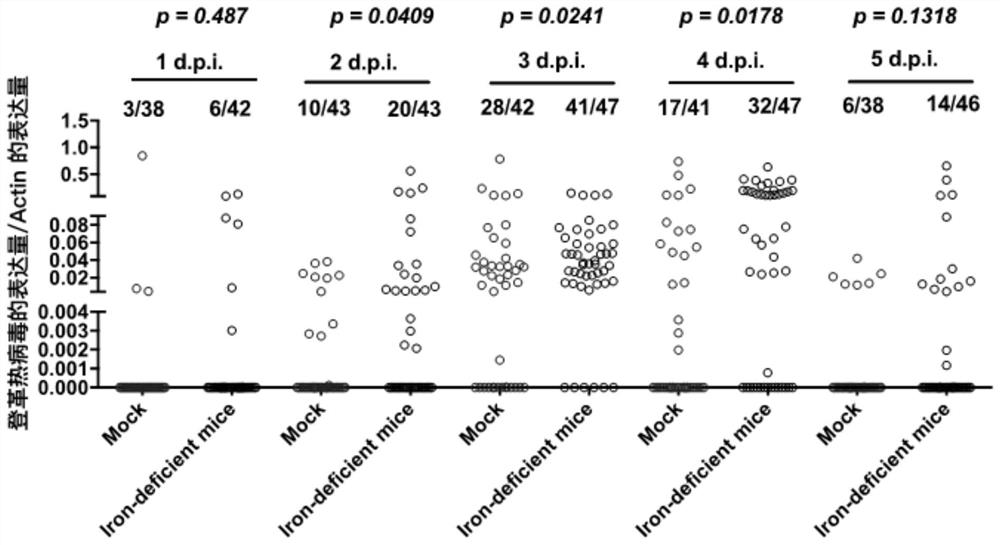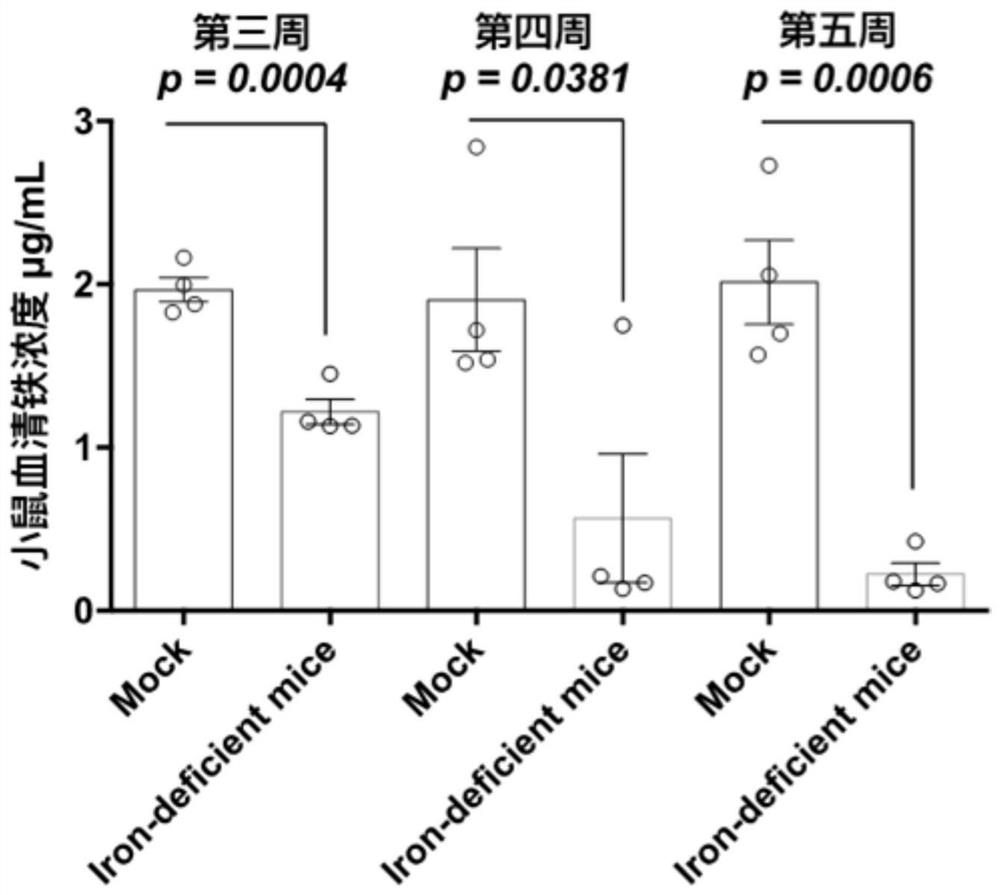Application of iron-containing substance to preparation of product for inhibiting dengue virus propagation
A technology of dengue fever virus and substances, applied in the field of application of iron-containing substances in the preparation of products for inhibiting the spread of dengue fever viruses
- Summary
- Abstract
- Description
- Claims
- Application Information
AI Technical Summary
Problems solved by technology
Method used
Image
Examples
Embodiment 1
[0029] Embodiment 1, feeding ammonium ferric citrate to suppress the susceptibility of dengue fever virus in Aedes aegypti by feeding the extracorporeal membrane feeding system
[0030] Feeding ferric ammonium citrate in an extracorporeal membrane feeding system can reduce the infection rate of Aedes aegypti to dengue virus. The specific experiments are as follows:
[0031] 1. Divide Aedes aegypti into 4 groups, namely Mock group, 25 μM FAC group, 50 μM FAC group and 150 μM FAC group, and perform the following treatments respectively:
[0032] Mock group: each Aedes aegypti was fed a mixture of human anticoagulated whole blood samples and dengue virus type 2 (DENV-2) supernatant (1:1 volume ratio) through an extracorporeal membrane feeding system;
[0033] 25 μM FAC group: each Aedes aegypti was fed human anticoagulated whole blood samples containing ferric ammonium citrate (FAC) and dengue virus type 2 (DENV-2) supernatant (1:1 volume ratio) through an extracorporeal membrane...
Embodiment 2
[0044] Example 2. The iron-deficiency mouse model significantly increases the susceptibility of dengue virus in Aedes aegypti
[0045] Virus particles and a large amount of blood in the host body enter the Aedes aegypti body during the blood-sucking process of Aedes aegypti. Therefore, the present invention adopts the following method to carry out the infection rate test of the dengue fever virus in the Aedes aegypti body by the iron-deficiency mouse model:
[0046] 1. Preparation of normal control mice and iron-deficient AG6 mice
[0047] The four-week-old AG6 mice, weighing 15g, were randomly divided into two groups, namely the Mock group and the Iron-deficient mice group, with 4 mice in each group, and were treated as follows:
[0048] Mock group: four-week-old AG6 mice were fed normal diet for five weeks;
[0049] Iron-deficient mice group: four-week-old AG6 mice were fed with iron-deficient diet for five weeks.
[0050] Two, after two groups of mice were fed for five we...
Embodiment 3
[0062] Example 3. Iron supplementation to infected hosts can significantly inhibit the susceptibility of dengue virus in Aedes aegypti
[0063] In the Aedes aegypti blood-sucking process, virus particles and a large amount of blood in the host body enter the Aedes aegypti body, therefore, the present invention adopts the following method to carry out the infection rate test of dengue virus in the Aedes aegypti body after iron supplementation to the infected host:
[0064] 1. Preparation of iron-deficient AG6 mice
[0065] Four-week-old AG6 mice were fed with iron-deficient feed for five weeks to obtain nine-week-old iron-deficient AG6 mice, and the serum iron of mice fed for the third, fourth and fifth weeks was determined, and the results were as follows: image 3 As shown, compared with normal mice (indicated by "Mock" in the figure), the serum iron concentration of the mice was significantly reduced after feeding the iron-deficient diet for five weeks, indicating that the i...
PUM
 Login to View More
Login to View More Abstract
Description
Claims
Application Information
 Login to View More
Login to View More - R&D Engineer
- R&D Manager
- IP Professional
- Industry Leading Data Capabilities
- Powerful AI technology
- Patent DNA Extraction
Browse by: Latest US Patents, China's latest patents, Technical Efficacy Thesaurus, Application Domain, Technology Topic, Popular Technical Reports.
© 2024 PatSnap. All rights reserved.Legal|Privacy policy|Modern Slavery Act Transparency Statement|Sitemap|About US| Contact US: help@patsnap.com










